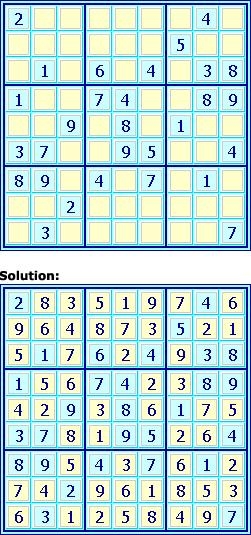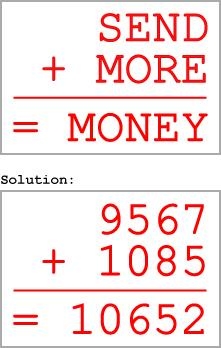The cache is NOT at the posted coordinates
About This Series
This Calgary Puzzle Solving 101 Series (CPS101) is based on the original Puzzle Solving 101 Series by ePeterso2.
The first 12 caches in this series help you build your puzzle-solving skills. Each contains a lesson focusing on a specific skill, examples of how to use that skill, an actual puzzle to test that skill, and a cache to find as a reward. Study the lesson, solve the puzzle, and you’ll have the location of a cache.
When you enter correct coordinates into the geochecker, a piece of information will be revealed that is required for the final exam (the 13th cache in the series).
Lesson 11: Logic
Logic puzzles test your ability to make valid deductions. They challenge you to analyze information, identify relevant facts, see connections, make inferences, apply reasoning, and assemble everything in a meaningful way. Even though this sounds very academic, logic puzzles actually are lots of fun.
While logic plays an important part in solving many types of puzzles, this lesson focuses only on those where logic has the starring role.
Types of Logic Puzzles
One can incorporate geocache coordinates into a wide variety of logic puzzles. Here are some favourites:
Logic Grid
For these puzzles, you’re given a set of objects (e.g., four people) and an equal number of unique property values for those objects (e.g., four ages, four occupations, four eye colours). Using a series of clues, you must logically determine which property values are associated with each object. John, for example, must be a 36-year-old butler with brown eyes.
To try some online examples, visit this site. For some tactical advice, watch this video. To solve a logic grid puzzle in the Calgary area, try BearGPS’s excellent Puzzler! (GCZ25D).

Puzzle and images by Georges Perrotte
Sudoku
To solve a Sudoku puzzle, you must fill a 9x9 square in such a way that all the rows and columns contain the digits 1 to 9 exactly once. Similarly, the nine smaller 3x3 boxes also must contain each of those digits.
Some of the required digits already will be entered for you. Use this information to determine the proper digits for the empty cells. Sudokus don’t involve any mathematics. The nine digits just as easily could be nine letters.
You can practice online at many sites, including this one. Tutorials come in video (first of three parts) and written form. Ready for a Calgary Sudoku cache? One Bad Ant’s Mini Cooper (GC199JP) is a great example.
Nonogram
These “paint-by-numbers” puzzles (a.k.a. nonograms, griddlers, picross, Hanjie) are grids with numbers across the top and down one side. The numbers in each row or column tell you four things: (1) how many groups of coloured cells are in that row or column, (2) how long each group is, (3) the groups’ colours, and (4) their order.
When you’ve deduced which squares are coloured and which remain empty, you’ll reveal a hidden picture that looks like it came from an 8-bit video game. Describing these wonderful challenges doesn’t do them justice. Here’s a much better explanation, including an animated illustration and some tactics.
To play online, check out this site and its tutorial. A fine nonogram cache near Calgary is rustywa’s Rainbow Series - Blue (GC29F42).

Puzzle by Henry Dudeney
Alphametic
An interesting blend of mathematics and logic, alphametic puzzles present you with some words and a basic mathematical operation. You must replace the letters with digits that correctly satisfy the equation.
Also called verbal arithmetics or cryptarithms, elegant alphametrics should have unique solutions. Each letter will represent a different digit, and multi-digit numbers should not have any leading zeroes.
Practice online, then find rustywa’s clever Rainbow Series - Green cache (GC29F41) north of Calgary.
Word Fill-In
Your mission is to use a list of words to fill a crossword-style grid. Unlike crossword puzzles, fill-ins require no vocabulary skills. It’s just a matter of logically placing each word in its correct location so all the words fit together properly.
Pick up a few pointers and play online.
General Solving Techniques
Use a Pencil
Trust us, you’ll mess things up…often. You’ll erase…often. Use a pencil and thank us later.
Start with the Obvious
Scan the puzzle for the most apparent clues. Then, carefully review it to gather more helpful information. Repeat as necessary.
Eliminate the Impossibile
For many puzzles, you’ll start with a list of potential answers and use information to logically narrow the possibilities.
For example, we’ve written down a number. Use the following clues to deduce that number.
- It’s a single-digit integer. (Answer: 0, 1, 2, 3, 4, 5, 6, 7, 8, or 9)
- It’s an even number. (Answer: 0, 2, 4, 6, or 8)
- It’s an integer multiple of 3. (Answer: 0 or 6)
- It’s less than 4. (Answer: 0)
Each empty cell in a Sudoku essentially is a mini-logic puzzle that you must solve. Write the digits 1 to 9 in each empty cell. Then use information from the other cells to cross out more and more of those digits.
Apply Brute Force
Brute force guessing means testing all the remaining value combinations to see which one works.
When you start a puzzle, it normally would take too long to test all the possible value combinations. Sometimes, however, you’ll reach a point where you’re completely out of ideas but have only a small number of possibilities left. Start guessing. If one combination doesn’t work, then move on to the next.
Find an Online Solver
If all else fails, you can search the Internet for online solvers. Computers easily can analyze certain types of logic puzzles, and people have written free programs to do this. Enter some reasonable keywords (e.g., “sudoku solver”) into an Internet search engine and try some of the results.
Just remember that this shortcut takes all the pleasure out of solving the puzzle yourself.
Puzzle 11: Do You CalcuDoku?
Similar to a Sudoku puzzle, each row and column in this CalcuDoku must use the digits 1 to 6 exactly once.
All the highlighted blocks are labeled with a number and a mathematical operation (+,-,x,/). When the digits in a block’s cells are combined using the specified operation, the result must be the specified number. The same digit might appear more than once in blocks that occupy multiple rows and columns (e.g., the “90x” block).
Note: The order of the digits is unimportant for calculating the result. In a two-cell block labeled “6/,” for example, the digits could be either [6][1] or [1][6].
Ignore the letters in the gird until you’ve completed the puzzle and are ready to determine the cache’s coordinates.

Insert the correct digits into this formula:
N50 58.ABC W114 06.DEF
then verify your coordinates by clicking on the image below:

The cache is near some steep slopes, but there is a fence for your protection. The cache is on the safe side of the fence.
Your goal is a sandwich-sized Lock & Lock inside another container. Accessing that container is a field puzzle, but it shouldn’t be too hard. Please don’t damage the container trying to force it open. No key is required; use your head instead.
We initially stocked the cache with 33 poker chips, but feel free to trade whatever you like.
Thanks to Ms. CanadianRockies for the landscape painting.
Congratulations to Bearberry and The Cub for being the first-to-find.